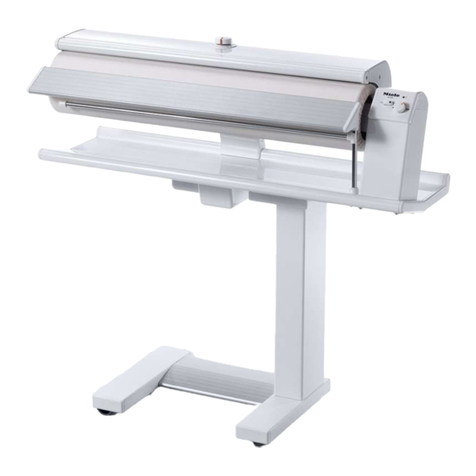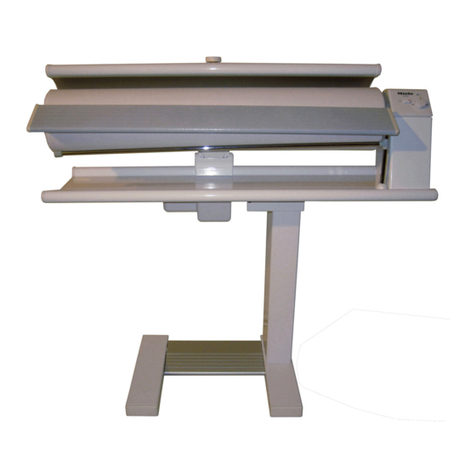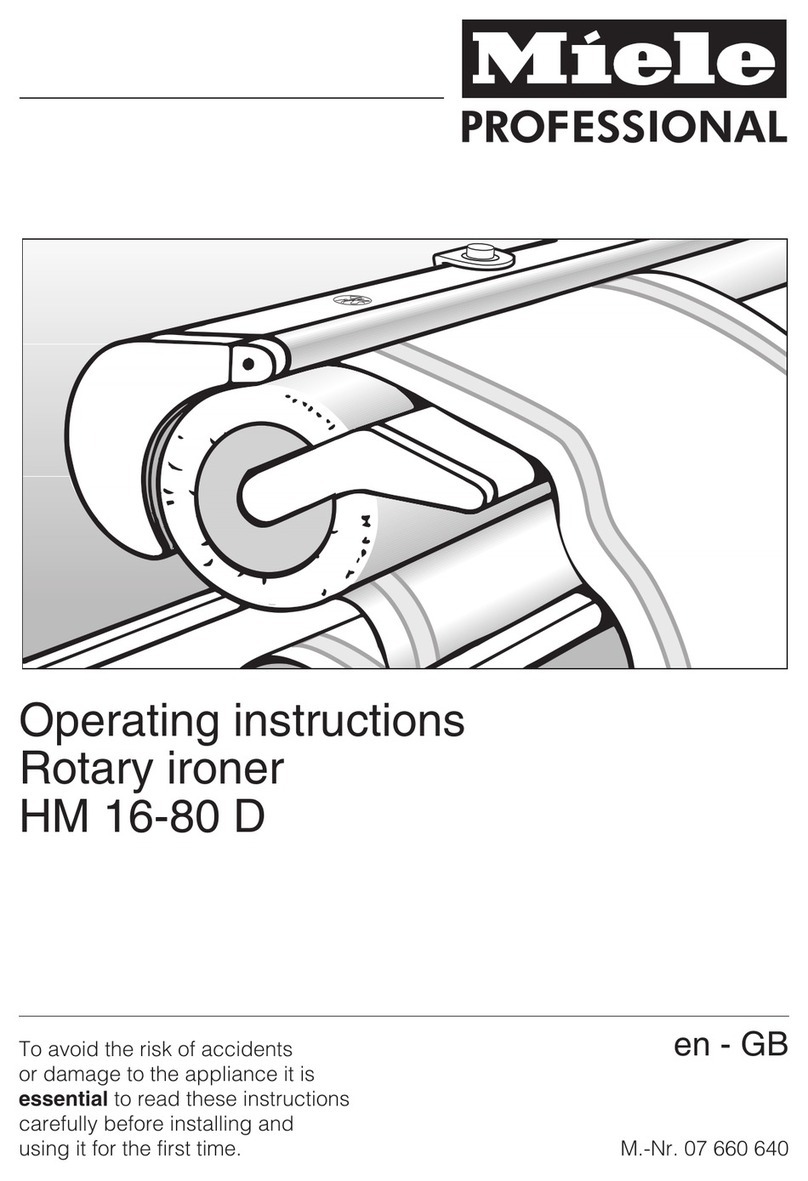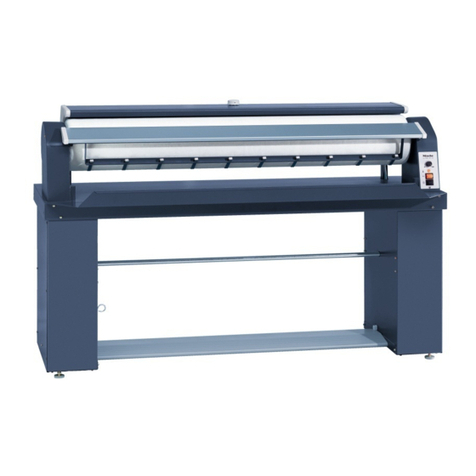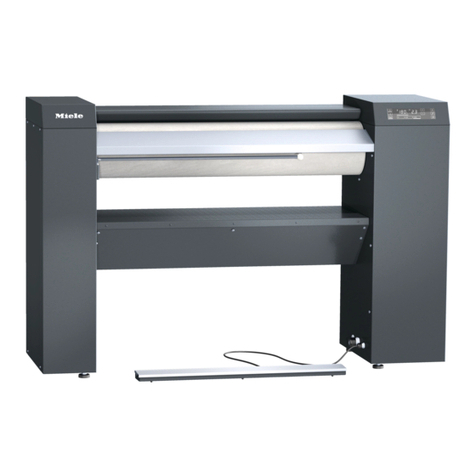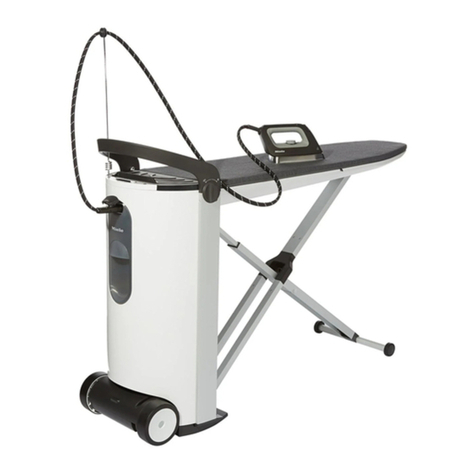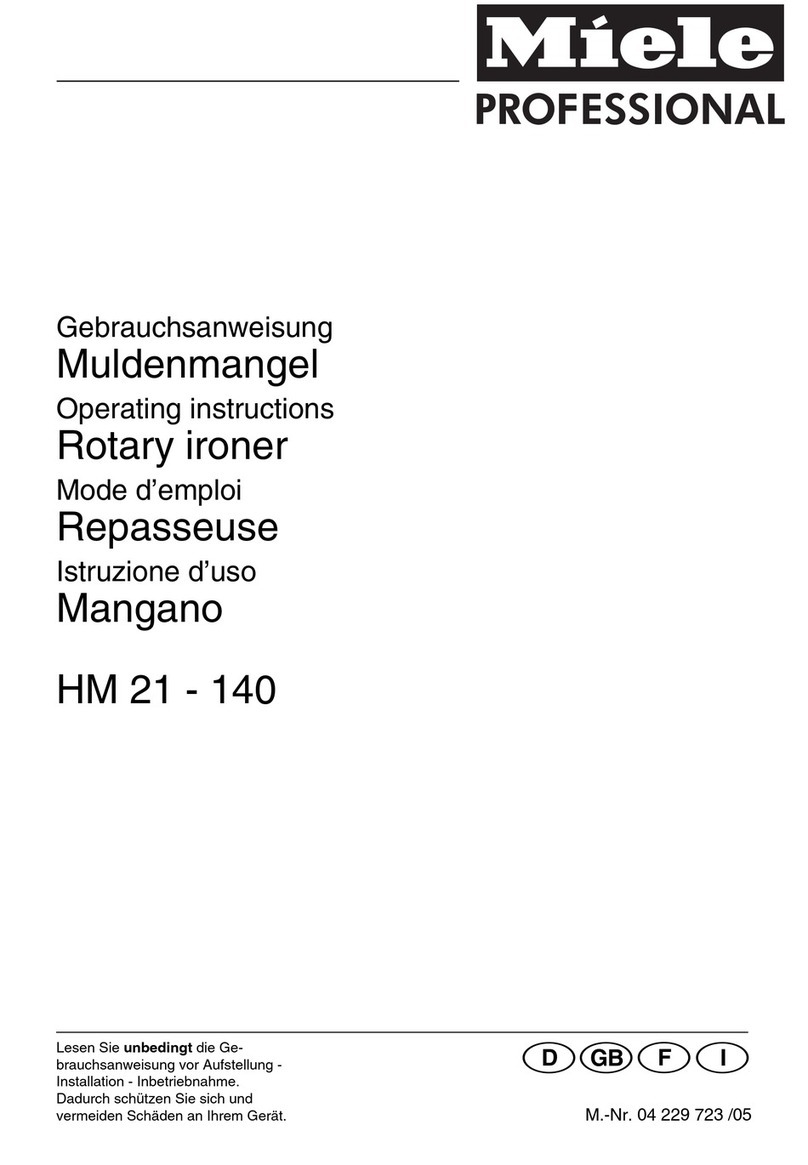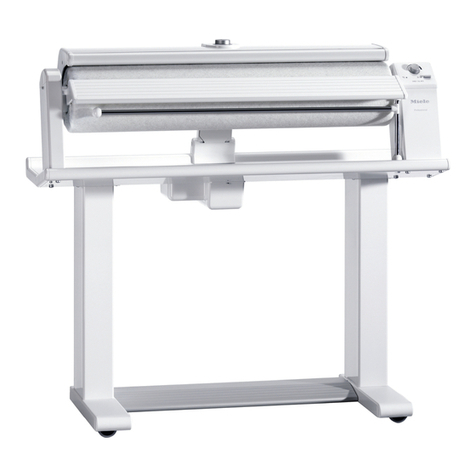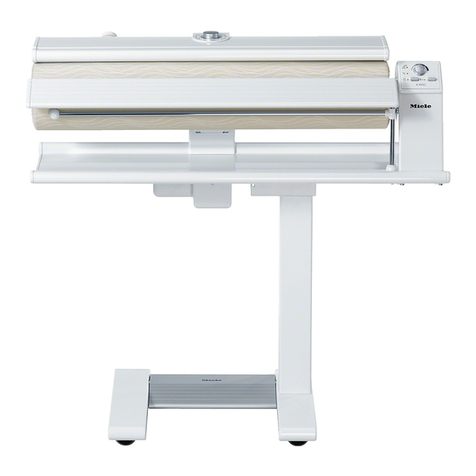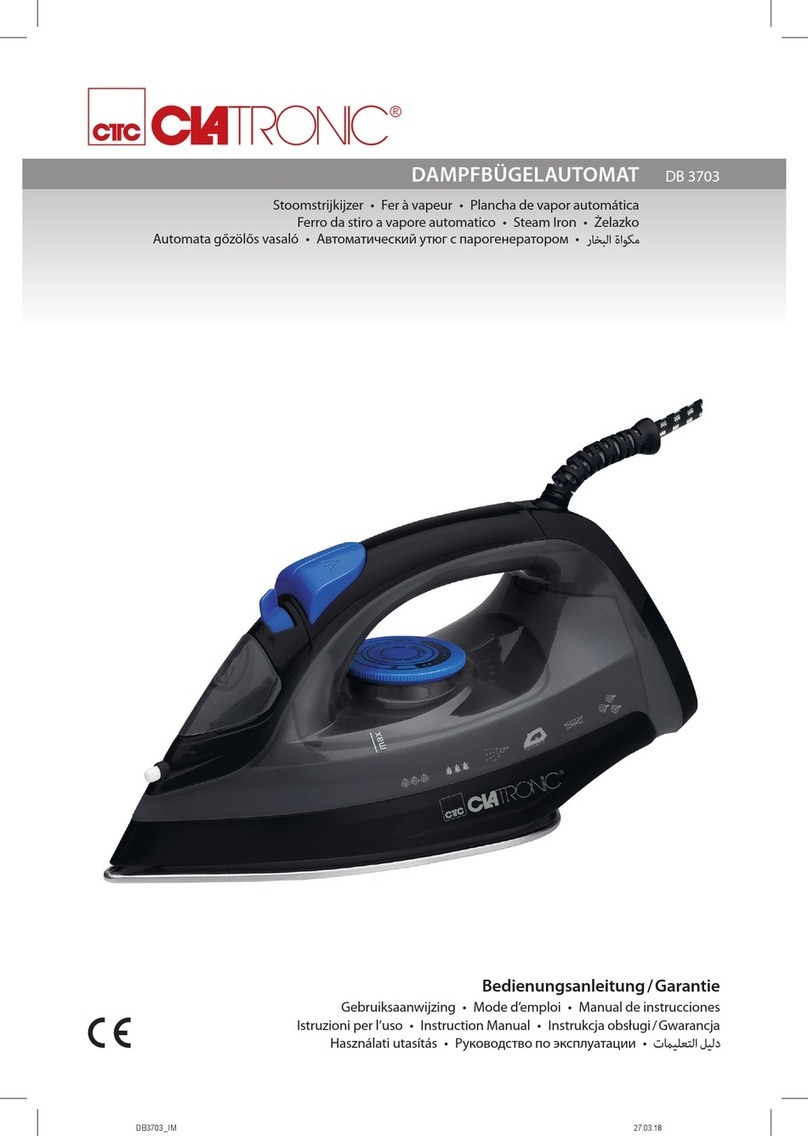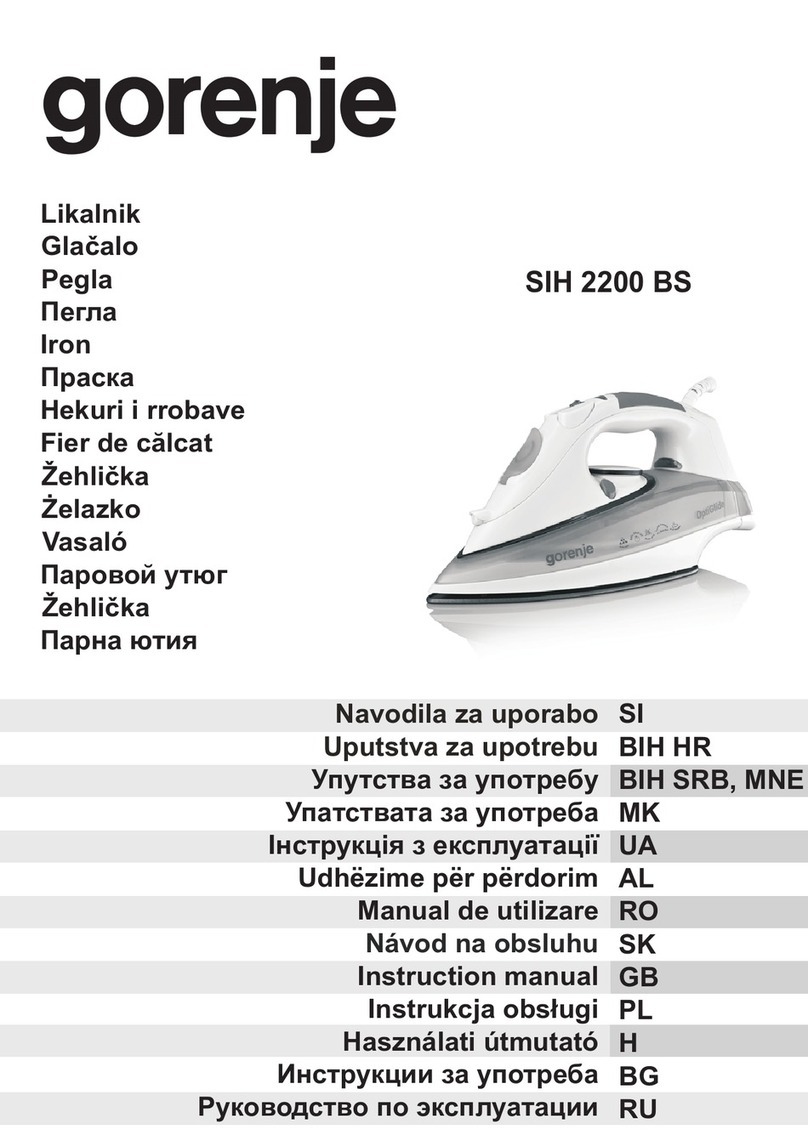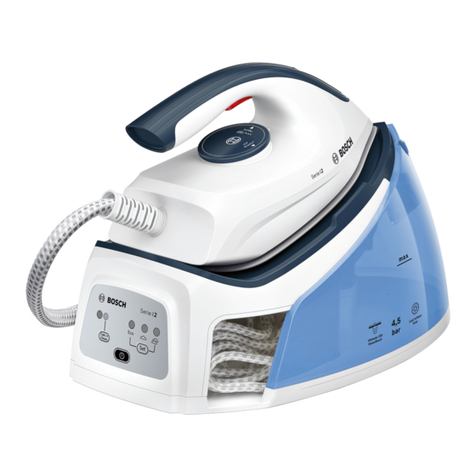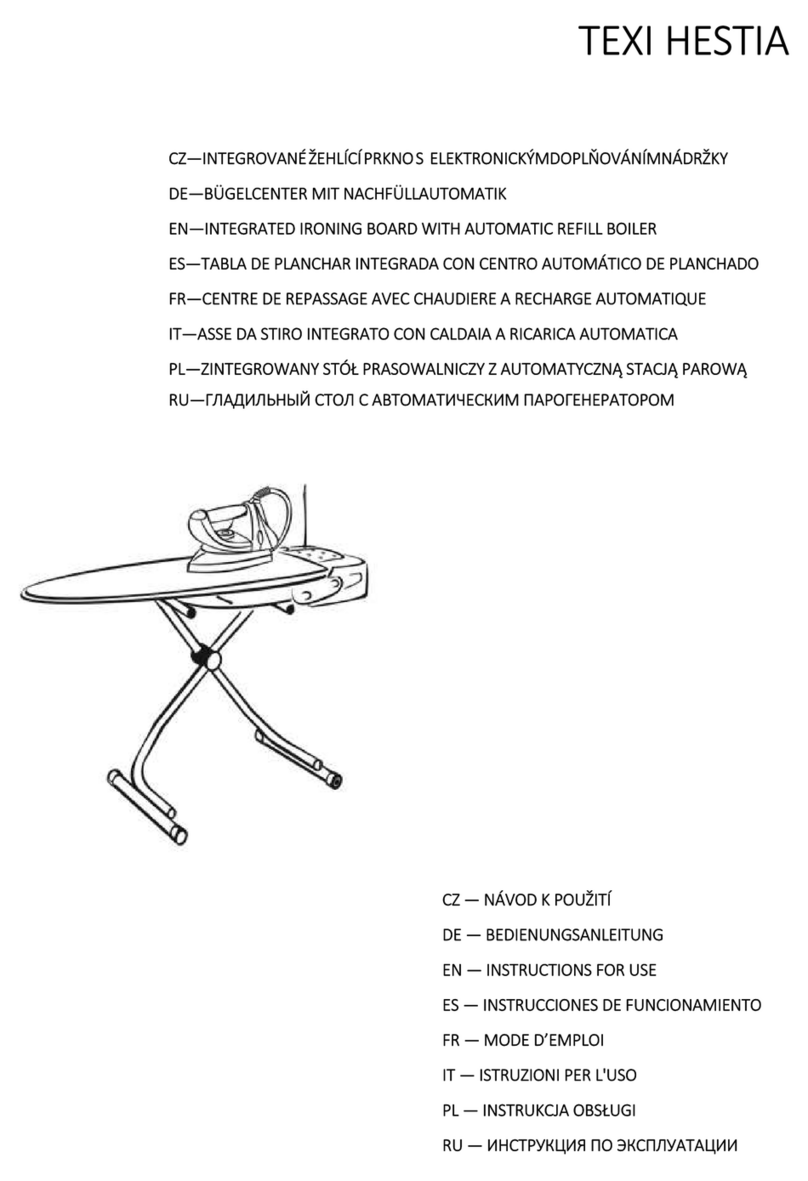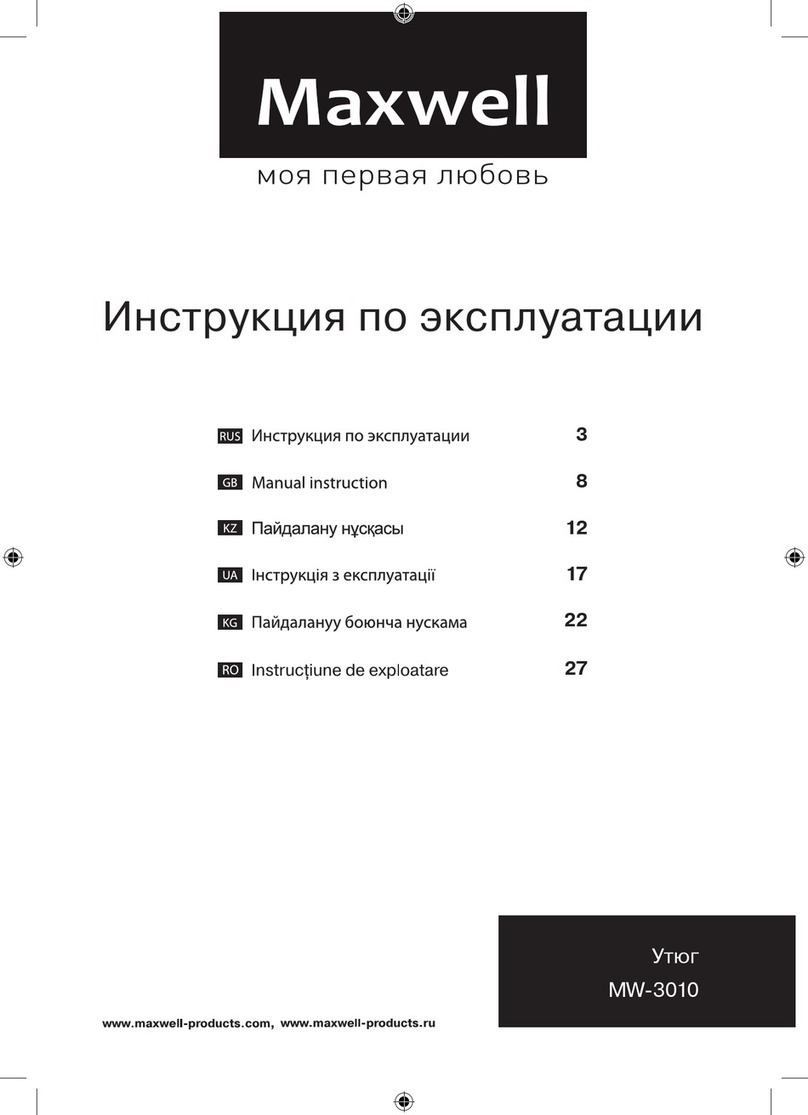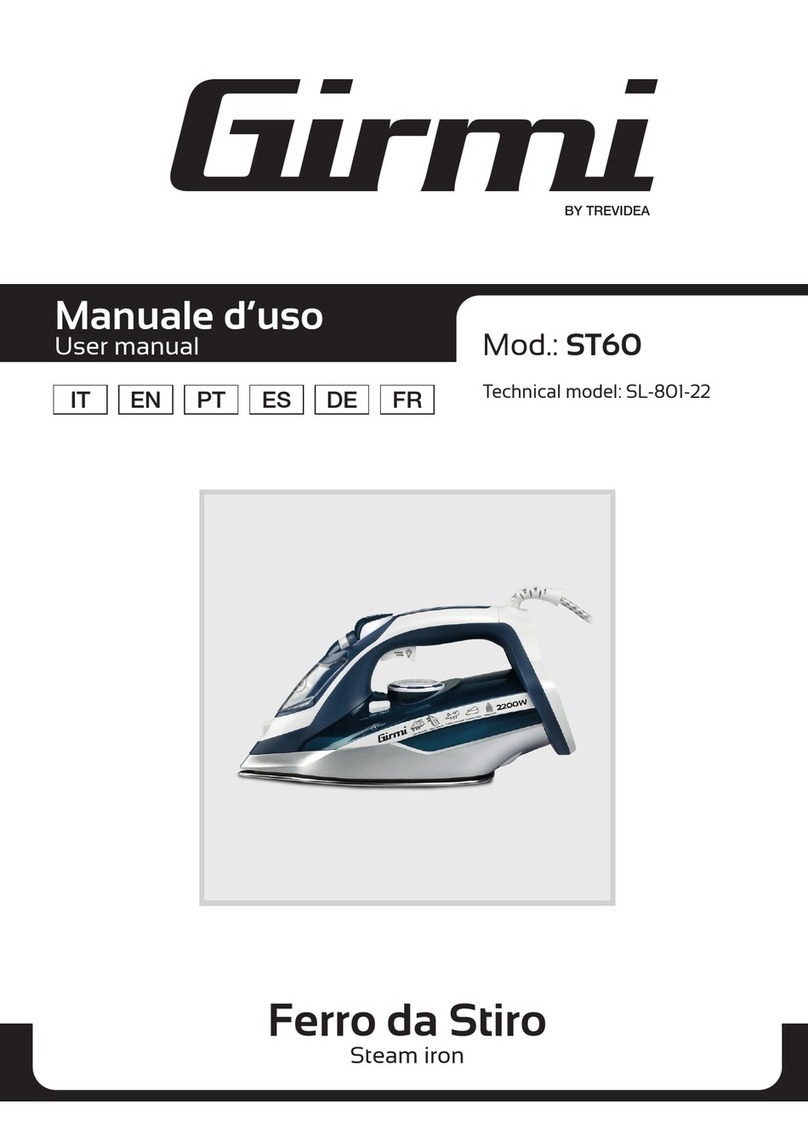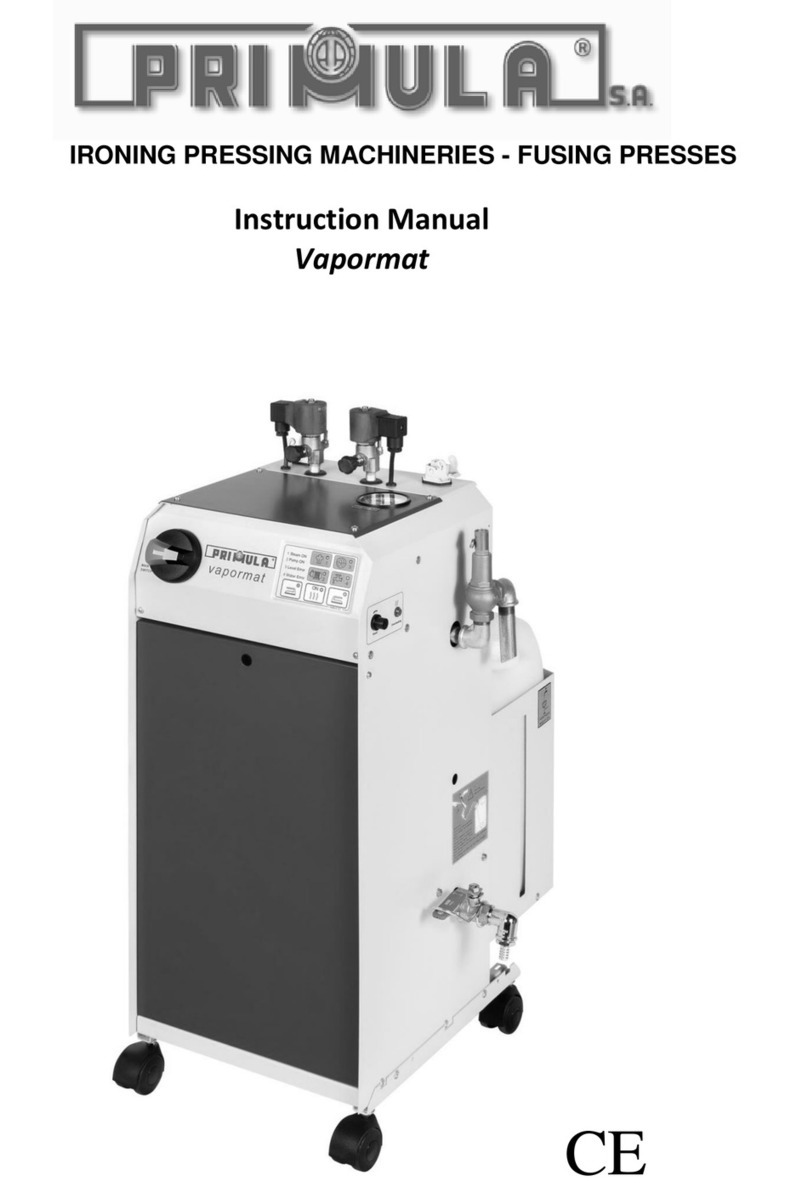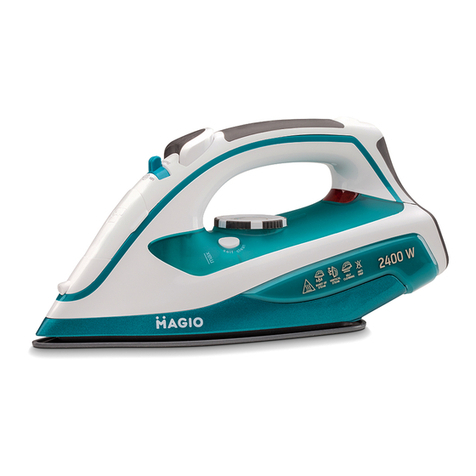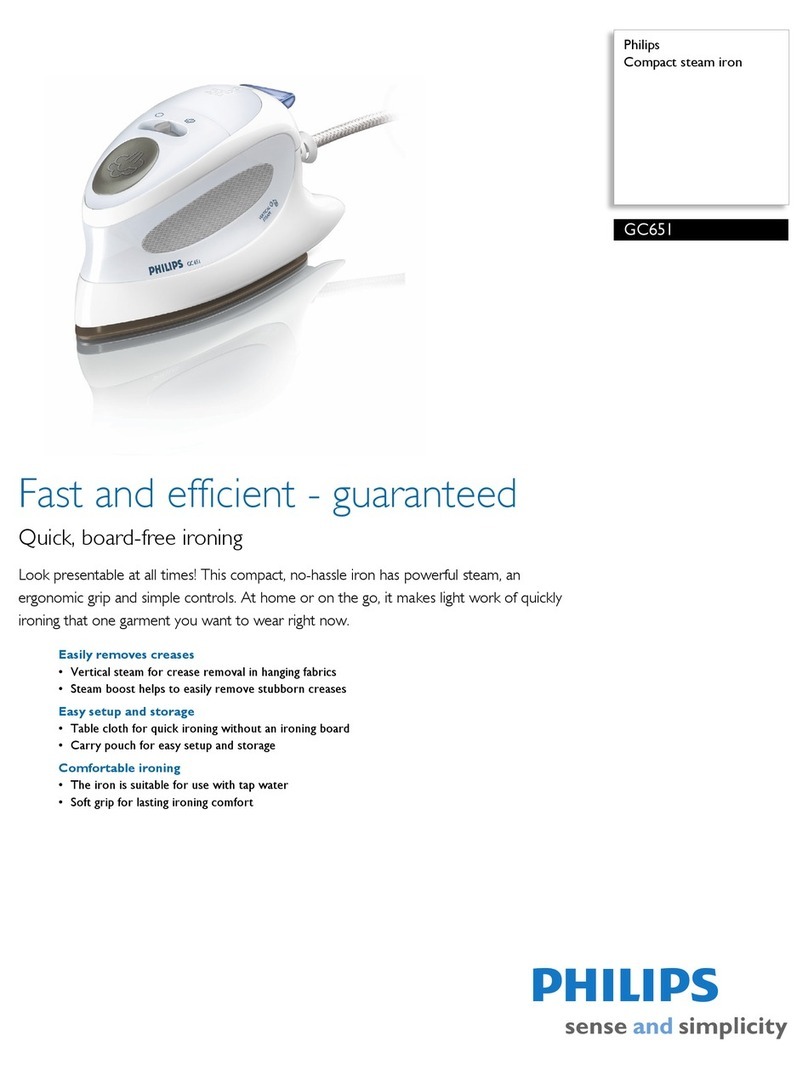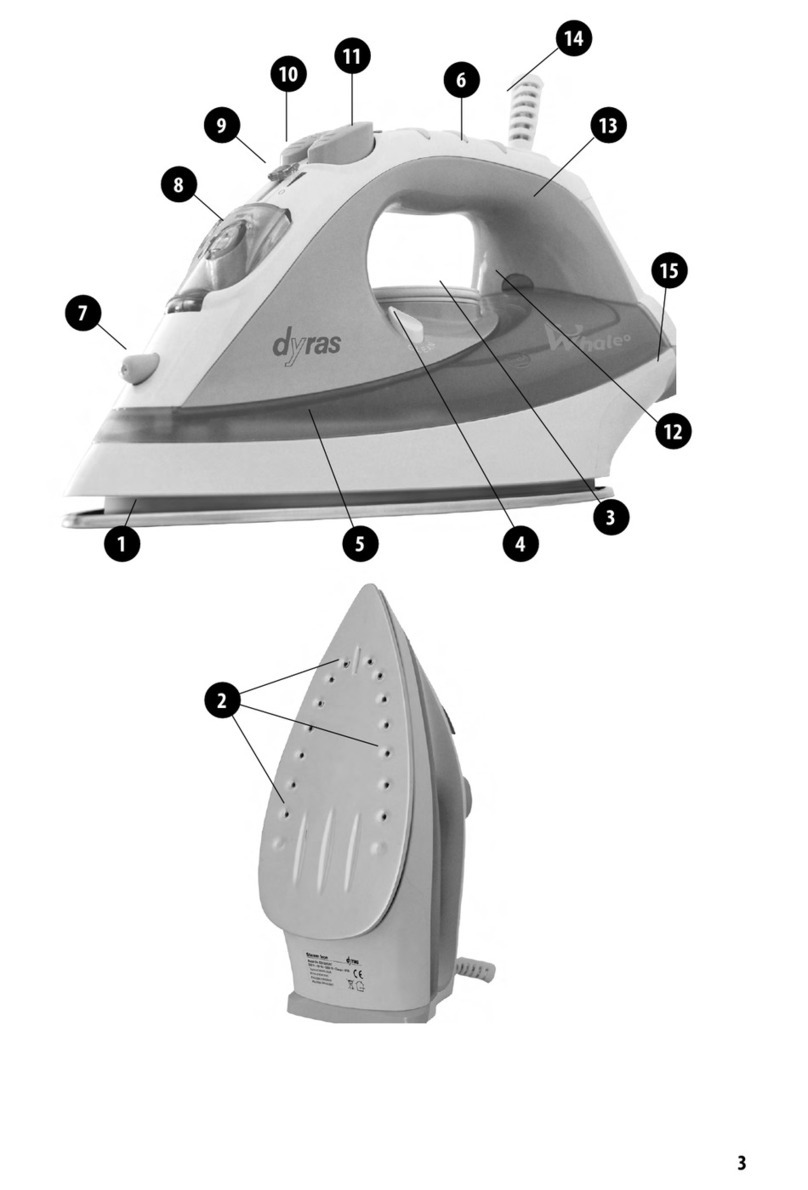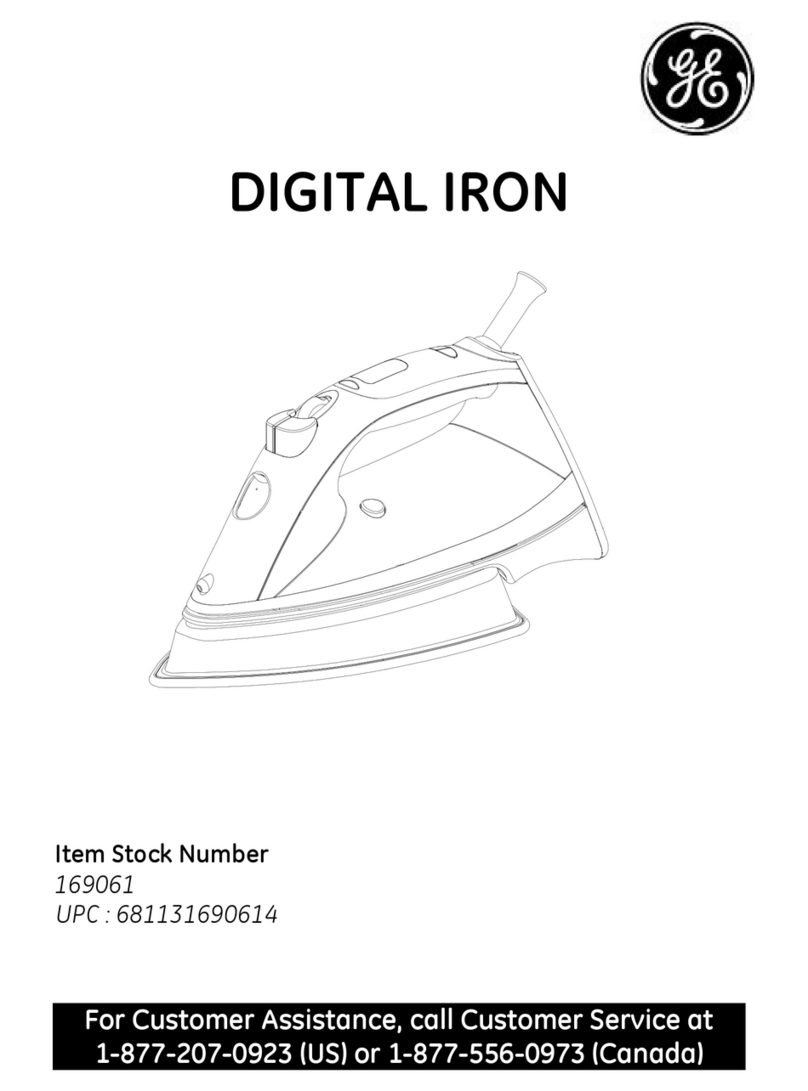Read the operating instructions carefully before
using this appliance for the first time. They contain
important information about the safety, use and
maintenance of the appliance. Please read them
carefully to prevent accidents and machine dama-
ge.
Regard the national and local codes and stan-
dards.
Keep these instructions in a safe place for referen-
ce, and pass them on to any future user.
Proper use
~This rotary iron is only intended for ironing fabrics
that were washed in water. Check fabric care labels
to verify that the articles can be machine-ironed.
~Persons who lack physical, sensory or mental abi-
lities, or experience with the appliance should not use
it without supervision or instruction by a responsible
person.
~If the rotary iron is operated in an area accessible
to the public, the operator must ensure that the appli-
ance can be used safely.
~Only allow trained personnel to operate the machi-
ne.
Technical and electrical safety
~Before setting up the rotary iron, check for any vi-
sible damage. Never use a damaged appliance. A
damaged rotary iron is dangerous!
~If the power cord is damaged it must be replaced
by a Miele authorized service technician.
~A damaged appliance is dangerous. Turn off the
rotary iron, unplug from the wall outlet and contact
Technical Service.
~Do not operate a machine with an electrical fault
until repaired.
~Before connecting the appliance, ensure that the
connection data on the data plate (fusing, voltage
and frequency) match the household electrical supp-
ly. If in doubt, consult an electrician.
~Do not modify the machine power cord or plug.
~Be certain this appliance is properly installed and
grounded by an authorized technician. For electrical
safety this machine must be grounded. It is imperati-
ve that this basic safety requirement be tested by a
qualified electrician. Consult a qualified electrician if
in doubt.
~Installation, repair and maintenance work should
be performed by a Miele authorized service technici-
an. Work by unqualified persons could be dangerous.
~Before installation or service, disconnect the po-
wer supply to the work area by removing the fuse or
"tripping" the circuit breaker to the unit.
~Use only genuine Miele parts. Use of non-Miele
parts may impair performance and void any guaran-
tees and product liability claims.
~The appliance is completely isolated from the
electricity supply when:
–it is turned off at the wall switch and unplugged, or
–the circuit breaker has been "tripped".
~Do not damage, remove or bypass the safety
components or control elements of the appliance.
~Only operate the rotary iron when all removable
outer casings are in place so that it is impossible to
touch an electrical component or moving part.
Use
~Be aware of loose fitting or hanging clothing when
using the rotary iron. Items such as wide sleeves or
apron strings could be wound in the roller.
~Remove all jewelry and tie back long hair before
ironing.
~Do not allow children to play on or near the rotary
iron, or to operate the controls or unit.
~Danger of burns when the heater plate is touched.
Do not smooth an item between the heater plate and
the roller.
~Never drape items over the heater plate when it is
heated. This is a fire hazard.
~Hang laundry on the laundry bar.
The laundry bar is only intended for hanging laundry
on. Swing it back immediately after use. Take care
not to press down on the bar when it is swung out.
The rotary iron could tip over.
~Turn the appliance off before pulling the plug from
the electrical outlet.
~Pull only on the plug and not on the power cord.
~Do not lay the power cord over the heater plate
when it is heated.
This could damage the cord - danger of electric shock!
Use the cable holders on the appliance to secure the
cord.
Accessories
~Accessories should only be used if approved by
Miele. If other parts are used, warranty, performance
and product liability claims may be void.
SAVE THESE INSTRUCTIONS AND RE-
VIEW THEM PERIODICALLY
Important Safety Instructions
3




